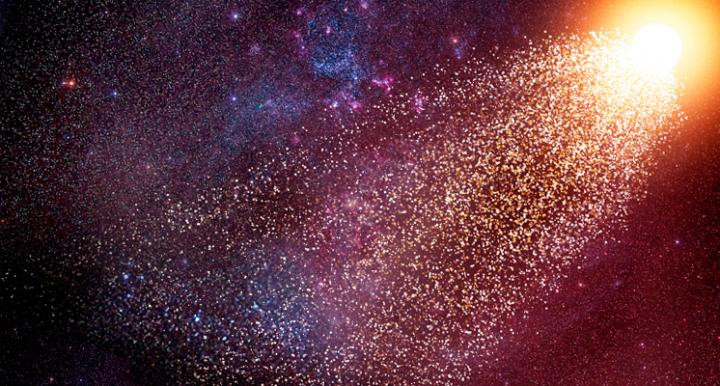The fastest stars in the Milky Way are 'runaways' from another galaxy
The runaway stars are thought to have been born in the Large Magellanic Cloud.

Some stars in the Milky Way are moving so fast that they could escape the gravitational pull of the galaxy. It turns out that these extraordinarily fast-moving stars came from another galaxy.
The 'hypervelocity' stars originated in the Large Magellanic Cloud, finds a study in the Monthly Notices of the Royal Astronomical Society. There are about 20 hypervelocity stars that have been discovered so far, although the figure observable from Earth could be as many as 10,000.
It was previously thought that the stars were expelled with force from an orbit around the supermassive black hole at the heart of the Milky Way.
"Earlier explanations for the origin of hypervelocity stars did not satisfy me," said Douglas Boubert of the University of Cambridge in a statement. "The hypervelocity stars are mostly found in the Leo and Sextans constellations - we wondered why that is the case."
Boubert and his colleagues' computer simulations now suggest another scenario could be more likely. An explosion of a binary system in the Large Magellanic Cloud may have been enough to send the stars out of the galaxy and set them on their route towards our galaxy.
A binary system is where two stars orbit one another. If they orbit very quickly close to one another and one of them explodes in a supernova, the other star is expelled with a lot of energy. On top of this, the Large Magellanic Cloud orbits the Milky Way at a speed of about 400 kilometres per second, so a star ejected from the galaxy can leave at incredible speeds.
"These stars have just jumped from an express train – no wonder they're fast," said Rob Izzard, also of the University of Cambridge and a study author. "This also explains their position in the sky, because the fastest runaways are ejected along the orbit of the Large Magellanic Cloud towards the constellations of Leo and Sextans."
The study is the first to propose that the hypervelocity stars are runaways from another galaxy. Observations made by the European Space Agency's Gaia satellite expected next year will help to determine the accuracy of the model.
"We'll know soon enough whether we're right," said Boubert. "[We should see] a trail of hypervelocity stars across the sky between the Leo and Sextans constellations in the north and the Large Magellanic Cloud in the south."
© Copyright IBTimes 2025. All rights reserved.





















